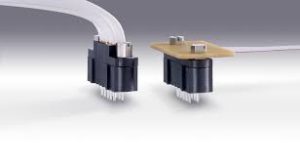Impedance Control Managed in Flex Circuit Designs
As PCB designs become increasingly complex and feature more active components, the resulting rigid-flex circuit boards often require impedance control to manage signal path loss and reflections. However, achieving good impedance control on these kinds of structures can be difficult due to the combination of factors that come into play in rigid-flex design.
This article will explore how impedance control is managed in flex circuit designs and the best methods for achieving the required results. By the end, readers should have a greater understanding of how to effectively design a flexible PCB that offers good impedance control.
The physical dimensions of a PCB’s components and materials are crucial when it comes to impedance control. In particular, different types of material have varying dielectric constants and loss tangents that can affect signal transmission. This makes it necessary to use carefully selected materials in a PCB’s construction, and to ensure that the correct thickness is used.

How Is Impedance Control Managed in Flex Circuit Designs?
Another factor that can have a significant impact on impedance control is trace width and spacing. This is particularly true in flex designs, where different impedance targets must be achieved on each layer of the board. Ideally, these targets will be clearly defined and consistent between the rigid and flex sections of a design. If not, the fabricator may need to go back and forth with the designer, which can lead to delays in getting the project back on track.
For example, using different trace widths on a single rigid-flex layer can cause signal losses that are unacceptable for high-speed signals. This can be solved by separating these tracks into different layers and specifying the desired widths for each. In addition, the traces should be spaced far enough apart to ensure that the signals do not interfere with one another.
The layout of the rigid and flex sections of a PCB is also important when it comes to impedance control. The flex section should be designed so that the traces can pass over and under the mesh layer without being interrupted by other components or connectors.
A conductive ground mesh is also useful for reducing the effects of electromagnetic interference (EMI) on the traces in a flex circuit. However, this needs to be carefully designed, as the traces must not be too close to the mesh or they will suffer from radiation leakage.
Impedance control on a flex circuit is a complicated task that requires careful consideration of a wide range of issues, including the layout of the design, material selection, and manufacturing process. Impedance control can be difficult to achieve on a rigid-flex PCB, but it is possible to design a robust system that supports emerging applications that require miniaturization, high density, and performance—without sacrificing signal integrity. By considering these various factors and following specific rules for rigid-flex PCB design, designers can achieve impedance control that is acceptable even in demanding environments. To learn more, download our free whitepaper on rigid-flex circuit board design.



